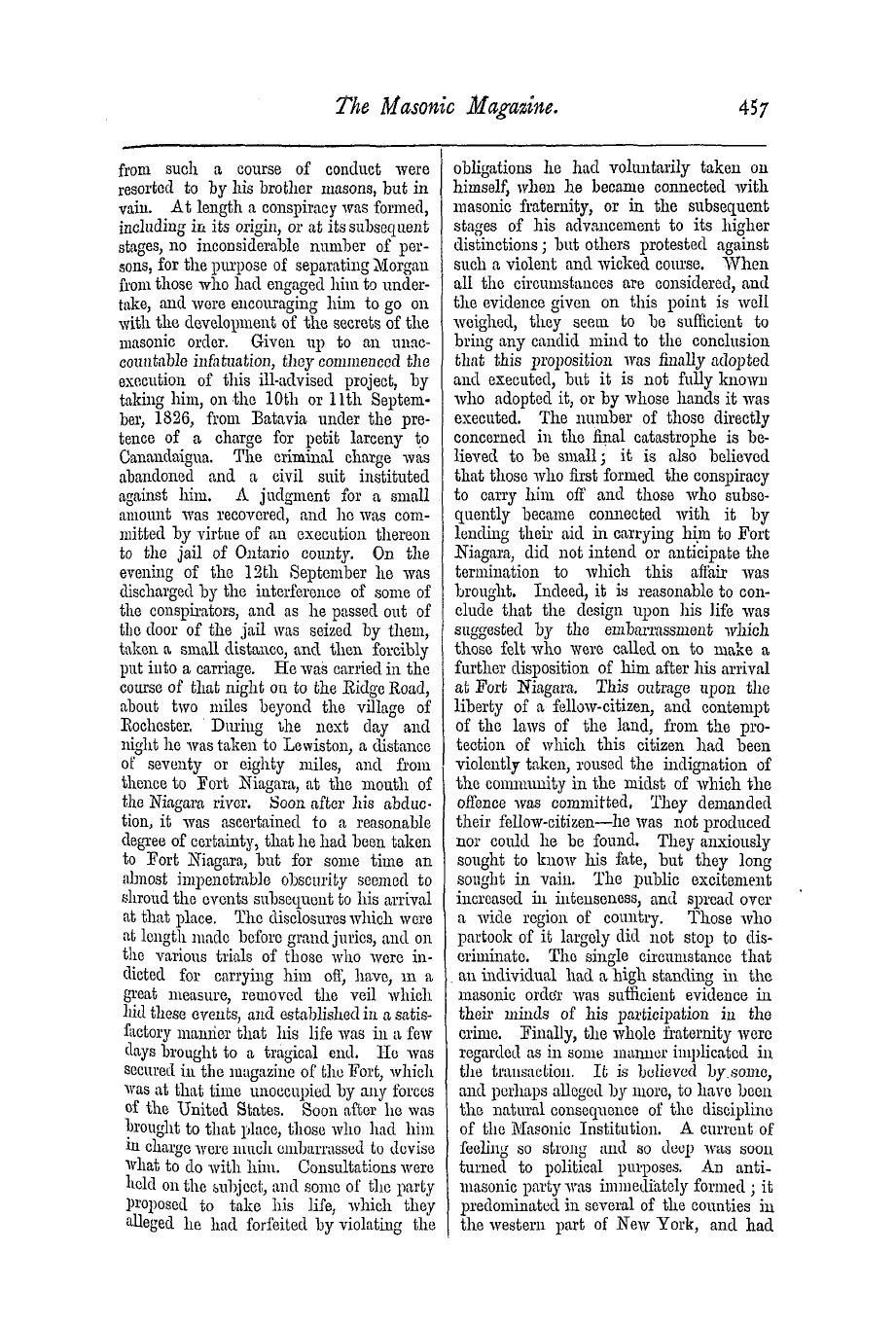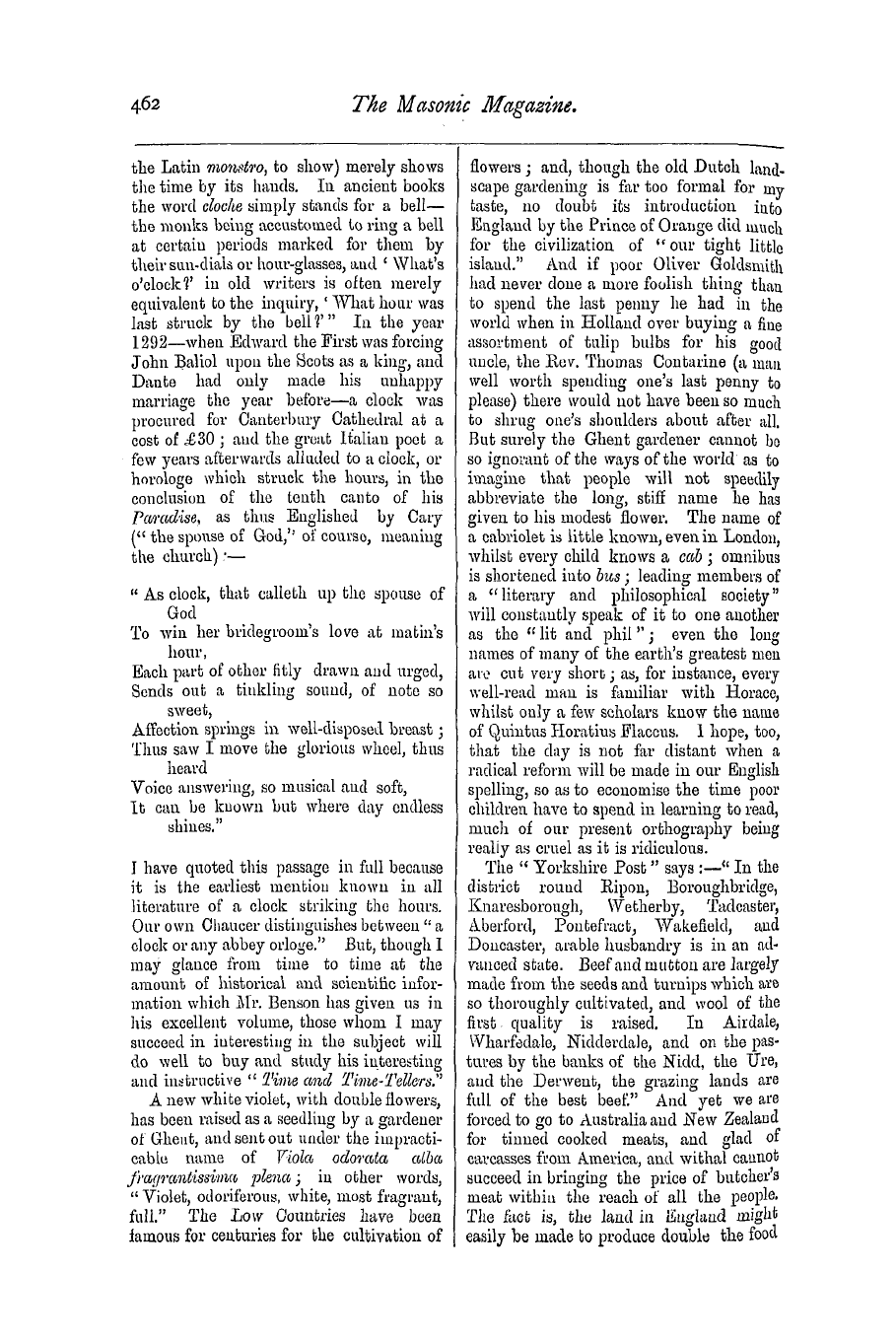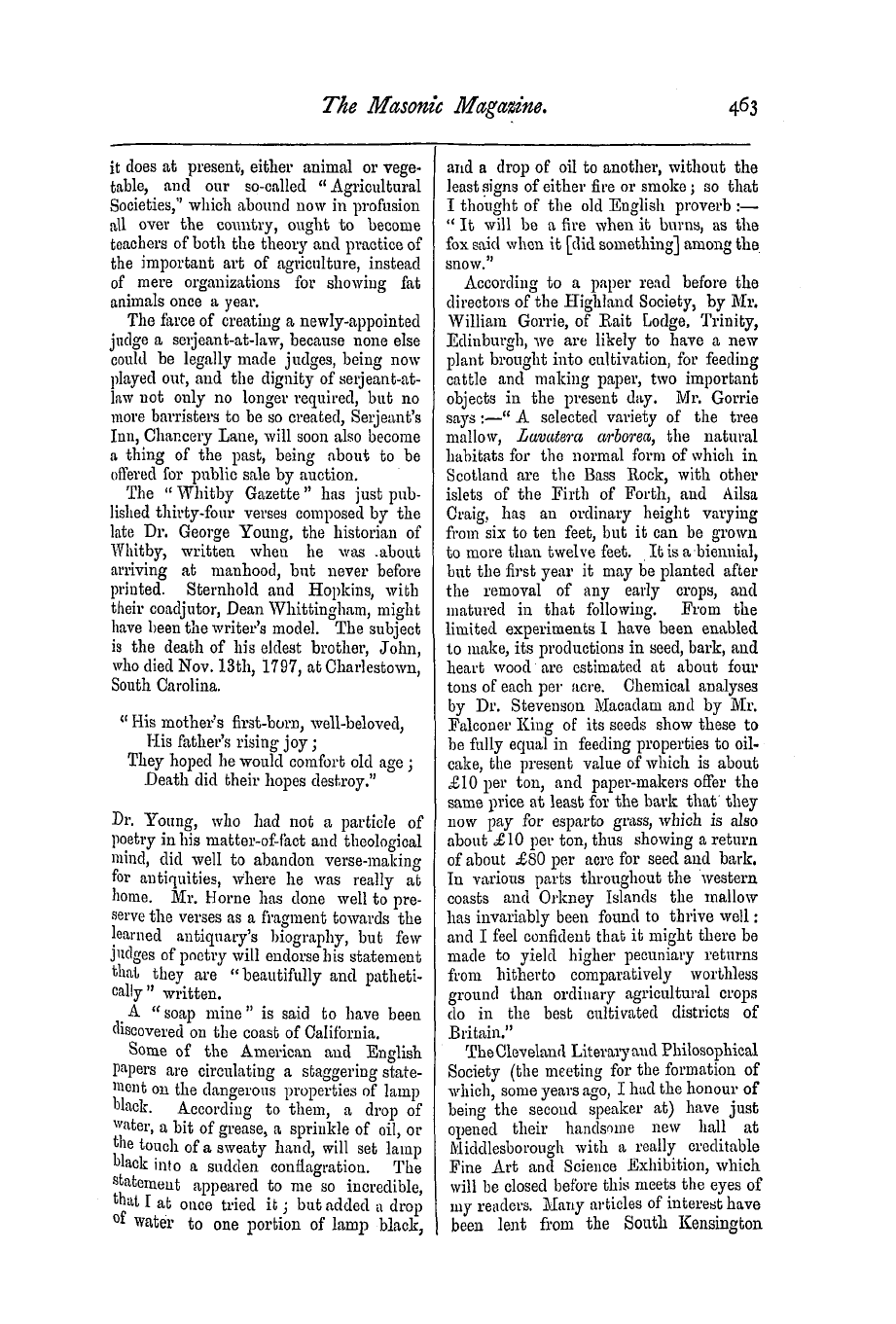-
Articles/Ads
Article ST. PAUL'S CATHEDRAL. ← Page 2 of 3 →
Note: This text has been automatically extracted via Optical Character Recognition (OCR) software.
St. Paul's Cathedral.
such a fund to acquiesce permanently in doing nothing . The letter is the result of a recent Italian tour to note any characteristics in the decoration of the churches most resembling St . Paul ' s in style , Avhich might furnish instruction for any future
plans as to the latter . The aim of Mr . Oldfield Avas to investigate the examples of ornamentation belonging , broadly speaking , to the 16 th ancl first half of the 17 th centuries , the former exhibiting the style whichby general agreementhas
, , been selected as most suitable for the completion of St . Paul ' s , where Sir Christopher Wren ' s designs are Avanting , though his intentions are known . The specimens of that class of work of sufficient merit to deserve detailed consideration will be found iu the
Capella dei Medici , at Florence , the churches of tlie Annunziata and the Gosu at Genoa , the church of San Vittore al Corpo at Milan , and the chief churches at Rome . As the practical conclusion of his researches Mr . Oldfield urges that the proper step now to be taken is to apply
the £ 40 , 000 or . £ 50 , 000 the Executive Committee alread y possesses in decorating tlie cupola of St . Paul ' s with mosaics similar in st yle to those in tlie cupola of St . Peter ' s . This proposal Sir . Oldfield bases on a passage in Wren ' s " Parentalia " Avhich
Avas composed mainly from Sir Christopher ' s papers , preserved and arranged by his son , and finally published by his grandson , and which may , therefore , be taken as tho most authentic record of the great designer ' s vieAv : —
"The jud gment of the surveyor was originally , instead of painting in the manner it is now performed , to have beautified the inside of the cupola Avith the more durable ornament of mosaic Avork , as is nobl y executed in the cupola of StPeter
. ' s in Rome , which strikes the eye of the beholder with a most magnificent and splendid appearance ; and which , Avithout the least decay of colours , is as lasting as marble or the building itself . For this purpose he had projected to have procured from Ital y four 0 f the most
eminent artists in that profession ; but as this art Avas a great novelt y in England , and not generall y apprehended , it chd not receive the encouragement it deserved ; it Avas imagined also that the expense would prove too great , and the time very Ion" in
the execution , but though these and all objections were fully answered , yet this excellent design was no further pursued . " Mr . Oldfield exhibits a woodcut section of the central part of St . Peter ' s , looking towards the south transept , and gives a general descri of the dome
ption : — "Sixteen ribs , radiating from the lantern as the centre of the cupola , nm like meridians of longitude from the polos of a globe , CIOAVII towards each pair oi pilasters in the drum . The sixteen
spaces between the ribs descend in like manner oyer the windoAvs between the pairs ol pilasters . This arrangement at once establishes an architectural continuit y between the cupola and the drum . At the same time , by distributing the cupola into mathematicall
y exact and equal sections , it shows the primary motive of its ornamentation to be not pictorial , but architectural . The ribs are all coloured blue , with gilt stars . The intermediate spaces are each divided verticall y into six compartments , narrowing as they rise from the drum to the lantern ; not , indeed , separated b y horizontal lines resembling
parallels of latitude Avhich would have been thought too formal , but resting one upon anotk & r in symmetrical curvilinear panels . The loAvest compartment is each a lunette , and contains on a blue background a half-length figure of one of the
Popes or Saints buried in the crypt of the church . The second , which is the largest and most important compartment , is of a nondescript quadrilateral form , arched above , and holloAved out beloAv . ' It contains a full-length colossal fi seated
gure , ancl seen in full face . The persons represented in the 16 compartments of this row are our Lord , the Blessed Virgin , St . John the Baptist , St . Paul and the twelve Apostles . The third compartment is a curvilinear quadrangle , hollowed out both above and
below , and is occupied by an angel resting on clouds , and holding one of the instruments of the Passion . The fourth is a circular medallion , Avith the head of a cherub surrounded by Avings . The fifth is another quadrilateral panel of nondescript form , its under side hollowed , its upper horizontal , and its vertical sides
converging as they ascend . Within it is an angel standing . The sixth compartment is a small rectilinear quadrangle , of tra-
Note: This text has been automatically extracted via Optical Character Recognition (OCR) software.
St. Paul's Cathedral.
such a fund to acquiesce permanently in doing nothing . The letter is the result of a recent Italian tour to note any characteristics in the decoration of the churches most resembling St . Paul ' s in style , Avhich might furnish instruction for any future
plans as to the latter . The aim of Mr . Oldfield Avas to investigate the examples of ornamentation belonging , broadly speaking , to the 16 th ancl first half of the 17 th centuries , the former exhibiting the style whichby general agreementhas
, , been selected as most suitable for the completion of St . Paul ' s , where Sir Christopher Wren ' s designs are Avanting , though his intentions are known . The specimens of that class of work of sufficient merit to deserve detailed consideration will be found iu the
Capella dei Medici , at Florence , the churches of tlie Annunziata and the Gosu at Genoa , the church of San Vittore al Corpo at Milan , and the chief churches at Rome . As the practical conclusion of his researches Mr . Oldfield urges that the proper step now to be taken is to apply
the £ 40 , 000 or . £ 50 , 000 the Executive Committee alread y possesses in decorating tlie cupola of St . Paul ' s with mosaics similar in st yle to those in tlie cupola of St . Peter ' s . This proposal Sir . Oldfield bases on a passage in Wren ' s " Parentalia " Avhich
Avas composed mainly from Sir Christopher ' s papers , preserved and arranged by his son , and finally published by his grandson , and which may , therefore , be taken as tho most authentic record of the great designer ' s vieAv : —
"The jud gment of the surveyor was originally , instead of painting in the manner it is now performed , to have beautified the inside of the cupola Avith the more durable ornament of mosaic Avork , as is nobl y executed in the cupola of StPeter
. ' s in Rome , which strikes the eye of the beholder with a most magnificent and splendid appearance ; and which , Avithout the least decay of colours , is as lasting as marble or the building itself . For this purpose he had projected to have procured from Ital y four 0 f the most
eminent artists in that profession ; but as this art Avas a great novelt y in England , and not generall y apprehended , it chd not receive the encouragement it deserved ; it Avas imagined also that the expense would prove too great , and the time very Ion" in
the execution , but though these and all objections were fully answered , yet this excellent design was no further pursued . " Mr . Oldfield exhibits a woodcut section of the central part of St . Peter ' s , looking towards the south transept , and gives a general descri of the dome
ption : — "Sixteen ribs , radiating from the lantern as the centre of the cupola , nm like meridians of longitude from the polos of a globe , CIOAVII towards each pair oi pilasters in the drum . The sixteen
spaces between the ribs descend in like manner oyer the windoAvs between the pairs ol pilasters . This arrangement at once establishes an architectural continuit y between the cupola and the drum . At the same time , by distributing the cupola into mathematicall
y exact and equal sections , it shows the primary motive of its ornamentation to be not pictorial , but architectural . The ribs are all coloured blue , with gilt stars . The intermediate spaces are each divided verticall y into six compartments , narrowing as they rise from the drum to the lantern ; not , indeed , separated b y horizontal lines resembling
parallels of latitude Avhich would have been thought too formal , but resting one upon anotk & r in symmetrical curvilinear panels . The loAvest compartment is each a lunette , and contains on a blue background a half-length figure of one of the
Popes or Saints buried in the crypt of the church . The second , which is the largest and most important compartment , is of a nondescript quadrilateral form , arched above , and holloAved out beloAv . ' It contains a full-length colossal fi seated
gure , ancl seen in full face . The persons represented in the 16 compartments of this row are our Lord , the Blessed Virgin , St . John the Baptist , St . Paul and the twelve Apostles . The third compartment is a curvilinear quadrangle , hollowed out both above and
below , and is occupied by an angel resting on clouds , and holding one of the instruments of the Passion . The fourth is a circular medallion , Avith the head of a cherub surrounded by Avings . The fifth is another quadrilateral panel of nondescript form , its under side hollowed , its upper horizontal , and its vertical sides
converging as they ascend . Within it is an angel standing . The sixth compartment is a small rectilinear quadrangle , of tra-

















































